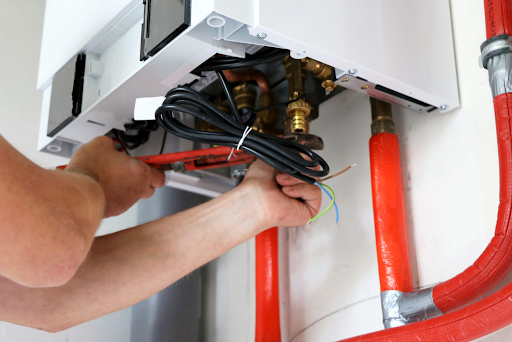Boilers play a crucial role in keeping our homes warm and comfortable, especially during the chilly months. While we often take the cozy warmth they provide for granted, understanding the intricate components that make up a boiler system can deepen our appreciation for these unsung heroes. In this article, we will delve into the essential boiler parts, unraveling the mysteries that lie beneath the surface.
The Boiler’s Brain: Control Panel and Thermostat:
At the helm of every boiler system is its control panel, the brain that orchestrates the entire heating process. The thermostat acts as the messenger, relaying temperature signals to the control panel, which, in turn, regulates the boiler’s operations. This dynamic duo ensures that your living space maintains a consistent and comfortable temperature.
Fuel Input System: Burner and Fuel Nozzle:
The heart of the boiler lies in its ability to generate heat, and this is where the burner and fuel nozzle come into play. The burner is responsible for igniting the fuel, be it natural gas, oil, or another energy source. The fuel nozzle controls the flow and dispersal of fuel, ensuring an efficient combustion process.
Heat Exchanger: Where Magic Happens:
Once the fuel is burned, the heat exchanger takes over. This vital component is like the boiler’s secret sauce, transferring the heat from the burning fuel to the water or steam that circulates through the system. This process is what ultimately warms up your home, making the heat exchanger a cornerstone of boiler functionality.
Pump and Circulation System: The Heartbeat of the Boiler:
To keep the heat circulating throughout your home, boilers rely on pumps and a circulation system. The pump propels the hot water or steam through the pipes and radiators, ensuring a steady flow of warmth to every corner of your living space. Without this circulation system, the heat generated by the boiler would remain confined, rendering it ineffective.
Pressure Relief Valve: A Safety Net for Your Boiler:
Boilers operate under high pressure, and to prevent any catastrophic mishaps, a pressure relief valve is installed. This crucial safety component releases excess pressure to maintain a stable and secure operating environment. Regular maintenance of the pressure relief valve is essential to guarantee its functionality and, consequently, your safety.
Expansion Tank: Handling the Swell of Success:
As the water heats up, it expands. The expansion tank acts as a buffer, absorbing this increase in volume to prevent excessive pressure within the boiler system. Think of it as the boiler’s way of handling success – accommodating the expansion without causing any disruptions.
Ventilation and Flue System: Breathing Easy:
Boilers produce combustion byproducts that need to be safely expelled from your home. The ventilation and flue system is responsible for this task, ensuring that gases like carbon monoxide are safely directed outside. A well-maintained flue system is crucial for the safety and efficiency of your boiler.
Conclusion:
Boilers are intricate marvels, composed of various parts working in harmony to provide the warmth we often take for granted. From the control panel to the heat exchanger, each component plays a crucial role in the seamless operation of these heating systems. Understanding the anatomy of your boiler not only enhances your appreciation for its functionality but also empowers you to take better care of this indispensable home appliance. So, the next time you bask in the comfort of a warm home, remember to thank the unsung heroes – the boiler parts working diligently behind the scenes.


